MYC Drives Temporal Evolution of Small Cell Lung Cancer Subtypes by Reprogramming Neuroendocrine Fate
- PMID: 32473656
- PMCID: PMC7393942
- DOI: 10.1016/j.ccell.2020.05.001
MYC Drives Temporal Evolution of Small Cell Lung Cancer Subtypes by Reprogramming Neuroendocrine Fate
Abstract
Small cell lung cancer (SCLC) is a neuroendocrine tumor treated clinically as a single disease with poor outcomes. Distinct SCLC molecular subtypes have been defined based on expression of ASCL1, NEUROD1, POU2F3, or YAP1. Here, we use mouse and human models with a time-series single-cell transcriptome analysis to reveal that MYC drives dynamic evolution of SCLC subtypes. In neuroendocrine cells, MYC activates Notch to dedifferentiate tumor cells, promoting a temporal shift in SCLC from ASCL1+ to NEUROD1+ to YAP1+ states. MYC alternatively promotes POU2F3+ tumors from a distinct cell type. Human SCLC exhibits intratumoral subtype heterogeneity, suggesting that this dynamic evolution occurs in patient tumors. These findings suggest that genetics, cell of origin, and tumor cell plasticity determine SCLC subtype.
Keywords: ASCL1; MYC; NEUROD1; NOTCH; SCLC; YAP1; mouse models; neuroendocrine; plasticity; tumor evolution.
Copyright © 2020 Elsevier Inc. All rights reserved.
Conflict of interest statement
Declaration of Interests T.G.O. has pending patent applications related to subtype stratification of SCLC: US16/335368, JP2019522392, and EP2017865057.
Figures

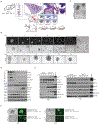

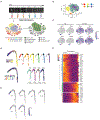
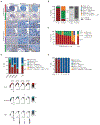
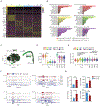

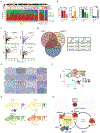
Comment in
-
NOTCH Your Usual Suspect: MYC Charged with Controlling Neuroendocrine Cell-Fate in Small Cell Lung Cancer.Cancer Cell. 2020 Jul 13;38(1):17-20. doi: 10.1016/j.ccell.2020.06.009. Cancer Cell. 2020. PMID: 32663464
References
-
- Angerer P, Haghverdi L, Buttner M, Theis FJ, Marr C, and Buettner F (2016). destiny: diffusion maps for large-scale single-cell data in R. Bioinformatics 32, 1241–1243. - PubMed
Publication types
MeSH terms
Substances
Grants and funding
LinkOut - more resources
Full Text Sources
Other Literature Sources
Medical
Molecular Biology Databases

